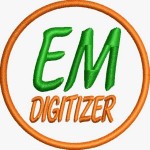Introduction
Embroidery has long been a popular and timeless art form, adding beauty and sophistication to fabrics and garments. With the advent of technology, the traditional process of hand embroidery has evolved into a more efficient and precise technique called embroidery digitizing. This innovative method involves converting artwork or designs into digital files that can be read by embroidery machines, allowing for automated stitching. Embroidery digitizing services have gained prominence in the fashion industry, as well as in promotional product manufacturing and personalized gift businesses. In this article, we will explore the key aspects of embroidery digitizing services and their benefits.
What is Embroidery Digitizing?
Embroidery digitizing is the process of converting a design or artwork into a digital file that an embroidery machine can read. Skilled digitizers use specialized software to create a file that contains information about the stitches, thread colors, and sequencing required to recreate the design accurately. The digital file acts as instructions for the embroidery machine, which then stitches the design onto the chosen fabric.
The Embroidery Digitizing Process
- Artwork or Design Conversion: The first step in embroidery digitizing involves converting the artwork or design into a digital format. This can be done by scanning a hand-drawn design or by creating a design from scratch using computer-aided design (CAD) software. The digitizer carefully traces the design, determining stitch types, directions, and densities.
- Digitizing Software: Specialized digitizing software is used to create the digital embroidery file. The digitizer selects stitch types, adjusts stitch parameters such as density and length, and assigns thread colors. This process requires a deep understanding of embroidery techniques and materials to achieve the desired outcome.
- Testing and Refining: Once the design is digitized, it undergoes testing to ensure accuracy and quality. The digitizer examines the stitched sample, making any necessary adjustments to achieve the desired look. This iterative process may involve modifying stitch types, densities, or colors until the final design matches the original artwork.
- File Transfer: After the design has been finalized, the digitized file is transferred to the embroidery machine. The machine reads the file and stitches the design onto the chosen fabric automatically, following the instructions encoded within the digital file.
Benefits of Embroidery Digitizing Services
- Precision and Consistency: Embroidery digitizing ensures precise and consistent stitching, resulting in high-quality finished products. The use of digitized files eliminates human errors and inconsistencies that can occur in traditional hand embroidery, providing a uniform appearance across multiple garments or products.
- Time and Cost Efficiency: By automating the embroidery process, digitizing services significantly reduce production time and cost. Once the design is digitized, it can be easily replicated on various items without the need for extensive manual labor. This makes embroidery digitizing ideal for bulk orders and large-scale production.
- Complex Design Execution: Digitizing software allows for the creation of intricate and complex designs that would be challenging to replicate through manual embroidery. Fine details, gradients, and small lettering can be accurately reproduced using digitized files, expanding the creative possibilities for embroidery.
- Quick Turnaround: Embroidery digitizing services offer fast turnaround times, especially for urgent or time-sensitive projects. Once the design is digitized, it can be quickly transferred to the embroidery machine, reducing production lead times and meeting tight deadlines.
Conclusion
Embroidery digitizing services have revolutionized the world of embroidery, offering precision, consistency, and efficiency in design execution. This technology-driven approach has made it easier for businesses to create high-quality embroidered products in a cost-effective and timely manner. Whether it's adding logos to garments, creating personalized gifts, or producing promotional items, embroidery digitizing services provide a valuable solution for businesses and individuals seeking professional embroidery results. As technology continues to advance, we can expect further enhancements in embroidery digitizing, making it an increasingly indispensable tool in the world of textile and fashion.






Comments